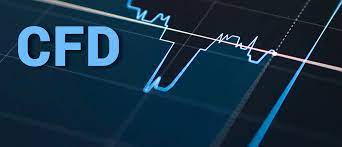CFD assets do not lose their relevance over time and do not go out of circulation because the commercial is dynamic: the boom is always followed by a recession. These directives are non-prescription monetary offshoots and the user can profit from differences in the costs of various financial contracts such as cryptocurrency. In addition, there are many advantages to such contracts.
The CFD cost is the wealth price. If the wealth cost increases, the CFD cost increases. An important distinguishing feature is the absence of stock fees and other disadvantages encountered in stock exchange trading. The price of a wealth allows the use of the benefit of a credit lever, which is usually unavailable in equity transactions. Over the past few years, derivatives have become very popular. Many exchanges offer CFD without commission fees and very attractive margin conditions.
You can make a profit by buying CFD deals if you think that their cost will rise, or by selling them if you are sure of the reverse trend of the commercial. Your earnings will be defined as the distinction among the total of bought and sold CFD assets.
Price deal trading requires leeway as well as a credit arm to increase capital. Brokers offer a credit shoulder at least 20 times larger than your invested capital. No charges and rewards — all earned remains to you. You can swallow or hand over a contract to profit from the growth or decline of the commercial.
Crypto CFD assumes the cost difference among cryptocurrencies and makes a good living.
There are different strategies used to purchase CFD assets. They are simple enough to be assumed by even beginners. The most popular method is to define a far or short place.
Also Read: Crypto Exchange India: General Overview
In a far place, the investor purchases an asset because it thinks it will increase its cost later. A good prediction provides investors with a large earning even with a small variation in the cost of a contract. Bargains are done on the basis of monthly and annual projections. A quick position occurs when the investor anticipates a drop in the importance of the contract and accordingly resolves to sell it. However, later investors can buy the same asset, but at a smaller cost.
If the forecast of a fall in the importance of a contract fails, its importance will start to fall and its rate will rise — the user will suffer a loss on that item, the sum of which will be matched to the distinction among the cost of the contract at the opening and closing of the bargain. The opposite is also true: if the forecast is right, the investor waits for a profit.
A quick position allows you to make a profit in short, up to one minute intervals.


